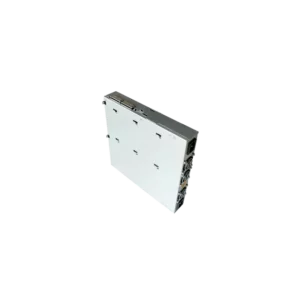Forum
Forum breadcrumbs - You are here:BT-Miners ForumAll Categories: CryptocurrencyIs Saving Equals Investment the B …
Is Saving Equals Investment the Best Way To Describe Savings?
ivysong btminers@ivysong
#1 · 10/29/2024, 03:29
Quote from ivysong btminers on 10/29/2024, 03:29Is Saving Equals Investment the Best Way To Describe Savings?
The notion that "savings equals investment" primarily signifies preserving funds designated for investment purposes. However, this expression fails to account for the dynamics of wealth creation or depletion, leading to an incomplete understanding of the economic landscape. To more accurately reflect the relationship between savings and the overall wealth generated within an economy, I propose that the equation must be amended to include an additional variable: "net production."
Thus, the revised equation for savings should read Savings = Investment + Net Production. In the framework I explore, spending is defined as the transfer of ownership of money for various purposes. This broad definition encompasses all monetary transactions, which facilitates the derivation of the savings-investment identity. It becomes evident that savings, by nature, encompasses two distinct components: the preservation of investment funds and the changes in wealth that result from economic activity. The preservation of investment money merely indicates that the funds remain constant throughout a given period. It does not reflect any net changes in wealth—whether through creation or depletion. In essence, savings as a preservation mechanism maintains the status quo of wealth in monetary terms without signifying any new wealth generated.
To incorporate a comprehensive accounting of wealth changes, we must recognize that savings must also account for the net production of wealth. This production involves measuring the wealth created minus any wealth depleted during the economic activities undertaken. Hence, a more holistic expression of savings acknowledges both the preservation of investment money and the net production of wealth that occurs as a result of economic activities. In this dual-component model, while savings reflect the maintenance of existing wealth, net production encapsulates the alterations in wealth levels, be they increases or decreases. This distinction allows for a clearer understanding of how savings interact with investment and overall economic health.
Moreover, in macroeconomic terms, spending generates income for recipients, yet this income does not inherently indicate a change in the overall wealth level. The total spending translates into gross income, merely reflecting the transfer of money ownership without altering wealth. It is only through net production—manifested in new wealth generation or the depletion of existing wealth—that true changes in wealth occur. It is crucial to distinguish between spending and wealth changes. Spending can stimulate economic activity and promote wealth creation, but it does not equate to wealth depletion.
This realization echoes Keynes’ observations regarding the "Paradox of Thrift," where reduced spending does not increase overall savings but can stifle economic activity and wealth production. Ultimately, the nuanced relationship between savings, investment, and net production reveals a complex interplay that must be examined with care. This two-pronged approach—considering both the preservation of investment money and net production—offers a more accurate representation of savings within the broader context of economic dynamics.
In The Context Of This Equation, Does Saving Equals Investment?
Within the context of this equation, many may argue
Identity vs. Equilibrium:
- The identity S=IS = IS=I (savings equals investment) holds in equilibrium. This means that in a closed economy, all savings must be invested; otherwise, there would be a surplus or shortage of funds in the economy.
GDP reflects the total value of goods and services produced in a specific area over a given period, expressed in currency (like $ or £). This financial framework allows us to aggregate diverse products, from tonnes of coal to veterinary visits. However, it’s important to note that not every financial transaction contributes to GDP; only those directly tied to production are counted. The equation 𝑌 = 𝐶 + 𝐼 + 𝐺 + 𝑁 𝑋 Y=C+I+G+NX encapsulates the expenditure approach to GDP. For instance, all the ice cream produced in a region ultimately gets consumed by households or exported, showcasing how products are allocated within the economy. Investment goods—like buildings, trains, ships, software, and intellectual property—provide value over multiple periods and are represented by the "I" in the GDP equation, unless exported. Other financial transactions unrelated to production are documented in the System of National Accounts, which sets the standard for national macroeconomic statistics, including GDP. In my view, stating that savings equals investment oversimplifies a complex relationship. While savings can indeed fund investments, this notion doesn’t capture how those savings are employed or their broader impact on wealth. A more accurate perspective considers savings as a blend of preserved funds and net production, highlighting the dynamic interplay of economic activity and wealth creation.
Which Ancient Civilization Practiced Early Forms Of Saving?
Did you know that the roots of saving and banking stretch back over 4,000 years to ancient Mesopotamia? Around 2000 BCE, this civilization pioneered the very first banking practices, laying the groundwork for the financial systems we rely on today.
Temples in this civilization acted as the first banks, storing valuable items and grain. Priests managed these resources, lending them to local farmers and merchants, while also keeping meticulous records of transactions—essentially the birth of bookkeeping. As banking concepts evolved, ancient Greece saw the rise of moneylenders and private depositories around 600 BCE. The introduction of standardized coinage in Athens facilitated trade, further expanding banking activities. The Romans contributed significantly to banking by establishing a network of banks across their empire and introducing financial innovations like bills of exchange, which enabled fund transfers between various locations.
Banking, while it fell with the Roman Empire in the 5th century, revived in medieval Europe during the 12th and 13th centuries. The Knights Templar safely stored valuables and made possible the movement of funds to Holy Land-bound pilgrims, thus laying the foundation for modern banking.
During the 14th and 15th centuries, the Italian city-states like Florence, Venice, and Genoa gained prominence as banking centers. The Medici family of Florence founded the Medici Bank and encouraged the practice of double-entry bookkeeping which eventually became a critical feature of modern bookkeeping.
The Birth of Modern Banking
Modern banking is generally dated from the founding of the Bank of Amsterdam in 1609. That was a central bank and it discharged the function of stabilizing the local currency. The Bank of Amsterdam was used as a model by other central banks, including the Bank of England, which was established in 1694, and the Sveriges Riksbank, established in 1668.Early Expansion of Banking
Banking started spreading throughout Europe during the 17th and 18th centuries. During this age, powerful banking families such as Rothschilds and Barings emerged. With the establishment of joint-stock banks, investors were able to buy shares and thereby to share in the bank's profits. Banking expanded just as rapidly in the New World, too, with the Bank of New York established in 1784, followed by the First Bank of the United States in 1791. State-chartered banks and the Federal Reserve System in 1913 contributed to American banking.
Innovations and the Evolution of Banking
The 19th and 20th centuries brought an unprecedented quickening in the rate of technological change. Thus, the introduction of the telegraph in the 1840s and the telephone in the 1870s allowed for speedier communication and thus facilitated the first wire transfers. The ATM, electronic payments, and online banking further facilitated banking in the second half of the 20th century.The Banking We Know Now Today
With the internationalization of banks during the late 20th century, when an institution was finally able to expand worldwide and even innovate digital currencies, a transition that their ancient counterparts could hardly have envisioned.
Among the first civilizations to practice primitive savings, the ancient Mesopotamians formed a basis of what became the gradually developed complex banking systems of today.
Bridging to Cryptocurrency and Mining Hardware
The main characteristic of cryptocurrency is that it can escape the precincts of conventional banking, given the features of decentralization and security. With only 21 million coins for Bitcoin, it is an incentive for people who want to grow their wealth. The more demand there is for Bitcoin, the more it can appreciate; thus, it would be an excellent investment in the long run.
Investing in Mining Hardware
For those looking to jump into cryptocurrencies, investment in mining hardware is a great way to become an active participant in the ecosystem. Mining allows not only earning Bitcoins through verification of transactions but also an avenue to generate passive income through the appreciation in value of Bitcoin.
Is Saving Equals Investment the Best Way To Describe Savings?
The notion that "savings equals investment" primarily signifies preserving funds designated for investment purposes. However, this expression fails to account for the dynamics of wealth creation or depletion, leading to an incomplete understanding of the economic landscape. To more accurately reflect the relationship between savings and the overall wealth generated within an economy, I propose that the equation must be amended to include an additional variable: "net production."
Thus, the revised equation for savings should read Savings = Investment + Net Production. In the framework I explore, spending is defined as the transfer of ownership of money for various purposes. This broad definition encompasses all monetary transactions, which facilitates the derivation of the savings-investment identity. It becomes evident that savings, by nature, encompasses two distinct components: the preservation of investment funds and the changes in wealth that result from economic activity. The preservation of investment money merely indicates that the funds remain constant throughout a given period. It does not reflect any net changes in wealth—whether through creation or depletion. In essence, savings as a preservation mechanism maintains the status quo of wealth in monetary terms without signifying any new wealth generated.
To incorporate a comprehensive accounting of wealth changes, we must recognize that savings must also account for the net production of wealth. This production involves measuring the wealth created minus any wealth depleted during the economic activities undertaken. Hence, a more holistic expression of savings acknowledges both the preservation of investment money and the net production of wealth that occurs as a result of economic activities. In this dual-component model, while savings reflect the maintenance of existing wealth, net production encapsulates the alterations in wealth levels, be they increases or decreases. This distinction allows for a clearer understanding of how savings interact with investment and overall economic health.
Moreover, in macroeconomic terms, spending generates income for recipients, yet this income does not inherently indicate a change in the overall wealth level. The total spending translates into gross income, merely reflecting the transfer of money ownership without altering wealth. It is only through net production—manifested in new wealth generation or the depletion of existing wealth—that true changes in wealth occur. It is crucial to distinguish between spending and wealth changes. Spending can stimulate economic activity and promote wealth creation, but it does not equate to wealth depletion.
This realization echoes Keynes’ observations regarding the "Paradox of Thrift," where reduced spending does not increase overall savings but can stifle economic activity and wealth production. Ultimately, the nuanced relationship between savings, investment, and net production reveals a complex interplay that must be examined with care. This two-pronged approach—considering both the preservation of investment money and net production—offers a more accurate representation of savings within the broader context of economic dynamics.
In The Context Of This Equation, Does Saving Equals Investment?
Within the context of this equation, many may argue
Identity vs. Equilibrium:
- The identity S=IS = IS=I (savings equals investment) holds in equilibrium. This means that in a closed economy, all savings must be invested; otherwise, there would be a surplus or shortage of funds in the economy.
GDP reflects the total value of goods and services produced in a specific area over a given period, expressed in currency (like $ or £). This financial framework allows us to aggregate diverse products, from tonnes of coal to veterinary visits. However, it’s important to note that not every financial transaction contributes to GDP; only those directly tied to production are counted. The equation 𝑌 = 𝐶 + 𝐼 + 𝐺 + 𝑁 𝑋 Y=C+I+G+NX encapsulates the expenditure approach to GDP. For instance, all the ice cream produced in a region ultimately gets consumed by households or exported, showcasing how products are allocated within the economy. Investment goods—like buildings, trains, ships, software, and intellectual property—provide value over multiple periods and are represented by the "I" in the GDP equation, unless exported. Other financial transactions unrelated to production are documented in the System of National Accounts, which sets the standard for national macroeconomic statistics, including GDP. In my view, stating that savings equals investment oversimplifies a complex relationship. While savings can indeed fund investments, this notion doesn’t capture how those savings are employed or their broader impact on wealth. A more accurate perspective considers savings as a blend of preserved funds and net production, highlighting the dynamic interplay of economic activity and wealth creation.
Which Ancient Civilization Practiced Early Forms Of Saving?
Did you know that the roots of saving and banking stretch back over 4,000 years to ancient Mesopotamia? Around 2000 BCE, this civilization pioneered the very first banking practices, laying the groundwork for the financial systems we rely on today.
Temples in this civilization acted as the first banks, storing valuable items and grain. Priests managed these resources, lending them to local farmers and merchants, while also keeping meticulous records of transactions—essentially the birth of bookkeeping. As banking concepts evolved, ancient Greece saw the rise of moneylenders and private depositories around 600 BCE. The introduction of standardized coinage in Athens facilitated trade, further expanding banking activities. The Romans contributed significantly to banking by establishing a network of banks across their empire and introducing financial innovations like bills of exchange, which enabled fund transfers between various locations.
Banking, while it fell with the Roman Empire in the 5th century, revived in medieval Europe during the 12th and 13th centuries. The Knights Templar safely stored valuables and made possible the movement of funds to Holy Land-bound pilgrims, thus laying the foundation for modern banking.
During the 14th and 15th centuries, the Italian city-states like Florence, Venice, and Genoa gained prominence as banking centers. The Medici family of Florence founded the Medici Bank and encouraged the practice of double-entry bookkeeping which eventually became a critical feature of modern bookkeeping.
The Birth of Modern Banking
Modern banking is generally dated from the founding of the Bank of Amsterdam in 1609. That was a central bank and it discharged the function of stabilizing the local currency. The Bank of Amsterdam was used as a model by other central banks, including the Bank of England, which was established in 1694, and the Sveriges Riksbank, established in 1668.
Early Expansion of Banking
Banking started spreading throughout Europe during the 17th and 18th centuries. During this age, powerful banking families such as Rothschilds and Barings emerged. With the establishment of joint-stock banks, investors were able to buy shares and thereby to share in the bank's profits. Banking expanded just as rapidly in the New World, too, with the Bank of New York established in 1784, followed by the First Bank of the United States in 1791. State-chartered banks and the Federal Reserve System in 1913 contributed to American banking.
Innovations and the Evolution of Banking
The 19th and 20th centuries brought an unprecedented quickening in the rate of technological change. Thus, the introduction of the telegraph in the 1840s and the telephone in the 1870s allowed for speedier communication and thus facilitated the first wire transfers. The ATM, electronic payments, and online banking further facilitated banking in the second half of the 20th century.
The Banking We Know Now Today
With the internationalization of banks during the late 20th century, when an institution was finally able to expand worldwide and even innovate digital currencies, a transition that their ancient counterparts could hardly have envisioned.
Among the first civilizations to practice primitive savings, the ancient Mesopotamians formed a basis of what became the gradually developed complex banking systems of today.
Bridging to Cryptocurrency and Mining Hardware
The main characteristic of cryptocurrency is that it can escape the precincts of conventional banking, given the features of decentralization and security. With only 21 million coins for Bitcoin, it is an incentive for people who want to grow their wealth. The more demand there is for Bitcoin, the more it can appreciate; thus, it would be an excellent investment in the long run.
Investing in Mining Hardware
For those looking to jump into cryptocurrencies, investment in mining hardware is a great way to become an active participant in the ecosystem. Mining allows not only earning Bitcoins through verification of transactions but also an avenue to generate passive income through the appreciation in value of Bitcoin.
Uploaded files:
Click for thumbs down.0Click for thumbs up.0
Last edited on 10/29/2024, 03:40 by ivysong btminers
Guest
Guest
Guest






